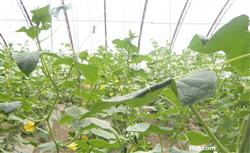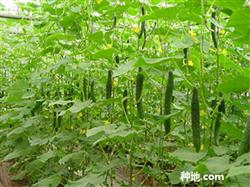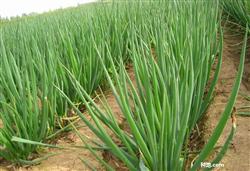How to Control Cucumber Diseases

How to control cucumber diseases? Please advise the prevention and control of cucumber diseases can refer to the following four points: first, judge whether cucumber is sick or not. First of all, we can see from the abnormal performance outside the plant, and second, we can judge what kind of disease it is from the external symptoms of the plant or the fruit. Finally, take a look at whether the disease is a physiological disease or an infectious disease. The general physiological diseases are characterized by large occurrence area and consistent onset time, but they are not contagious. The occurrence of infectious diseases is characterized by the occurrence of individual plants, and the onset time is first and then. For physiological diseases, it can be reduced by changing the adverse environment of plant growth into favorable environment, and by enhancing the resistance of plants to adverse environment. Adding 800 times of Fengshou No.1 during spraying can enhance plant resistance and resist bad growth environment. The prevention and control of infectious diseases should first eliminate seed pathogens. Seeds carrying bacteria can be sterilized by soaking seeds with warm scalding or chemical dressing. The common methods are as follows: 1. Soaking seeds in warm water: soaking seeds in 55 ℃ warm water for 25 minutes, then cooling them in cold water and sowing them dry. 2, medicament soaking seeds: ⑴ soaked the seeds with 40% formalin 100x solution for 30 minutes, washed the seeds with clean water after soaking, dried and sowed the seeds; ⑵ soaked the seeds in 2-3% bleach solution for 30-60 minutes, washed with clean water after soaking; ⑶ soaked the seeds with methyl topiramate 800x solution for 4 hours. 3. Seed dressing: seed dressing with 50% Fumishuang wettable powder according to 0.4% of seed weight. Secondly, disease-resistant varieties should be selected, such as some tomato varieties have high resistance to leaf mold, leaf curl, bacterial wilt and so on. In addition, to promote the robust growth of plants, plant growth is exuberant, disease resistance can be enhanced, at the same time to create an environment conducive to plant growth is also necessary. Second, what is the cause of the disease. When it comes to the cause of the disease, we should start from the cucumber growing environment. Cucumber pathogen in greenhouse generally overwinters in seeds, soil and manure and become the source of infection next year. The occurrence of most cucumber diseases needs more than 85% relative humidity, so one of the main reasons for the serious occurrence of cucumber diseases is excessive humidity. Third, how to carry out prevention and control. First of all, to control the disease, we should create an environment suitable for cucumber growth but not conducive to the growth of bacteria, that is, to control the temperature in the greenhouse and reduce the humidity. After the disease, downy mildew and blight are basically the same. The commonly used agents are mancozeb, pric, metalaxyl mancozeb and so on. The common fungicides of Botrytis cinerea are sclerotiorum, Shijiale, prohydantoin and so on, and the common fungicides of bacterial keratosis are streptomycin, bacteriorubicin, DT and so on. Fourth, matters needing attention in prevention and control. ⑴ distinguishes whether the fungicide is protective or internal absorption, the protective agent should be hit early, the spray should be thoughtful and meticulous, and the effect is not good after the disease. Internal inhalation agents can be used after the disease, and the effect is the best in the early stage of the disease. ⑵ prevention should be given priority to and prevention should be combined. Spraying should be based on the word "prevention". ⑶ should be mixed and used alternately to improve the control effect and prevent drug resistance. ⑷ to improve the quality of spraying, the back of the leaf should be sprayed evenly and meticulously, grasp the main contradiction, and spray the key parts according to the occurrence characteristics of the disease. Click to get more cucumber planting techniques click to get more vegetable planting techniques
- Prev

How to fertilize cucumber scientifically
How to fertilize cucumbers scientifically? Please refer to the following methods to fertilize cucumbers: 1. Transplanting period: five days after transplanting, Prodan 15-30-15 high phosphate fertilizer was irrigated 1000 times with seaweed essence, once every 10 days, twice in a row to promote root development after planting and enhance disease resistance in the later stage. 2....
- Next

How to manage green onions with high temperature and rainy summer?
How to manage green onions with high temperature and rainy summer? Please guide and thank you for promoting root in the early stage is the foundation. After transplanting, under the condition of high ground temperature, the physiological function of root system is very weak, slow seedling is slow, so it is not suitable to water more. You can pour small water when it is very dry, pay attention to drainage and waterlogging prevention when it rains, plough and loosen the soil in time after rain, and drain through.
Related
- Where is it suitable to grow horseradish in China? it is expected to see the middle altitude horseradish in Alishan.
- How to prevent tomato virus disease reasonably? (Control methods included)
- Many people like to plant towel gourd on the balcony. What are the main points of this method and management?
- What crops can chili peppers be mixed with?
- Fertilization techniques and matters needing attention in Tomato
- What are the grafting techniques for peach seedlings in spring?
- Harm and control methods of root swelling disease of Chinese cabbage
- What are the pests of sweet potatoes? How to prevent and cure it?
- Symptoms, causes and Control methods of navel Rot in Tomato
- The cause of "Cucumber rotten bibcock" in Farmers' planting Cucumber and its Control Plan

